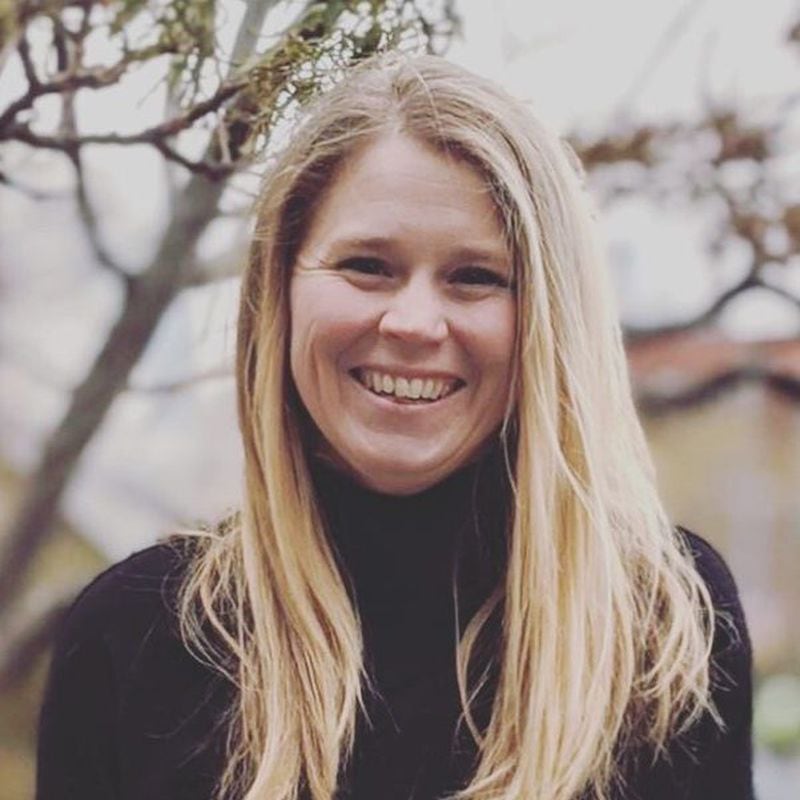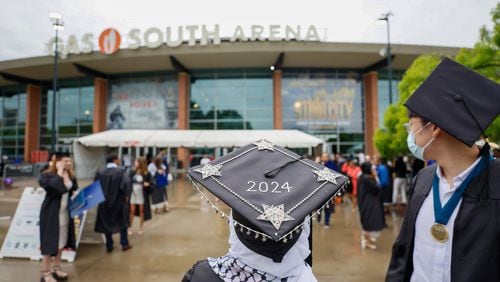Christina Proctor is a clinical assistant professor of Health Promotion and Behavior in the College of Public Health at the University of Georgia. She teaches Human Sexuality, Effects of Drug Use and Abuse, and Research Methods to undergraduate students.
In this guest column, Proctor discusses the role of school in giving her life organization, connections and goals -- all of which enabled her to succeed in spite of a chaotic and dysfunctional home life.
You can read an earlier blog essay by Proctor here.
By Christina Proctor
For most of the past year, I have pondered what it must be like to be an adolescent right now. Many school districts across the country are still forced to use virtual learning strategies to try to help control the spread of COVID-19 in an attempt to promote social distancing and eliminate large gatherings. The prioritization of vaccination in K-12 teachers has provided hope that we are on the way to having every student back in the classroom soon.
But for over a year many adolescents have had to learn in isolation with limited opportunities to connect with others, struggling to learn in the home environment, and taking on possible long-term mental health issues. Everyone has had an opinion in the virtual vs in-person learning argument, which pervades school board meetings, media outlets, and social media platforms.
I’ve read a dozen articles about economic impacts of school closures, about women having to leave jobs to help with online learning and childcare, about achievement gaps widening, and about mental health effects on children.
But there’s something missing from everything I’ve read. What are we going to change when we go back to school?
I’ve spent most of my life wondering if I was saved by getting an education or going to school. Was it something inside of me or influence from the outside world? I explore these questions every day in my work and research as a public health professor, focusing on adolescent health, school connection, and resilience.
All I know is that I loved school, and I loved to learn. I was connected to my schools, and it went beyond caring about getting an education or having a career. It went beyond loving Jane Austen and Ralph Ellison, chemical reactions, and algebra equations.
I loved school because it wasn’t my home. Unlike my home, school gave my life meaning and connected me to something bigger. School was an escape from a chaotic place where everyone seemed trapped by the unavailability of good choices.
Home was the place where my older brother got high on meth and stayed up all night counting every Fruit Loop in a cereal box or moving furniture around in the living room because someone wanted to kill him. Or it was the place my dad abandoned three separate times during my young life. Or it was no place at all.
Every night I lay in the lower bunk in the tiny back bedroom of our mobile home, staring up at the particle board where I carved chemistry and math equations. Every morning, I showered in a mildew covered bathroom with a pill bug infested window, excited to leave that place and go somewhere else for eight hours a day.
At school, I got to be someone else. My home was disorganized and dysfunctional, but my friends at school didn’t know that. I listened to them talk about their lives, sneaking to watch episodes of “Sex and the City” or arguing who was going to win “American Idol.” And it was nice to get to pretend to be a normal teenager for a part of my day.
I was connected to school because I loved being there. Can children who come from a background like mine thrive during virtual learning? Was virtual school enough or will there be a whole cohort of students who won’t be saved by the beloved act of going to school for the past year?
Credit: UGA
Credit: UGA
Research proves that school connection is important for student learning, health, and lifegoals. Disorganization within schools and a lack of connection to teachers and leaders influence youth to feel uncommitted to their school and community.
This breakdown and lack of commitment can lead to poor academic performance and deviant behavior. Students need to have a curriculum that provides hands-on learning opportunities, group work, and a wide variety of instructional methods to promote school connectedness.
Challenges associated with virtual learning during the COVID-19 pandemic have made it difficult to promote school connection. Early research shows students and parents report the quality and dosage of virtual learning vary significantly. Some students might not have access to virtual learning programs at their school at all. Even if students have access to virtual learning, it may be hard for them to remain engaged or connect with other students and teachers.
There are also differences in household adaptations to schooling online with higher income households, households with better internet access, and households in urban and suburban areas reporting higher rates of internet search intensity for both school- and parent-centered online learning resources. Low socioeconomic students and students living in rural areas may experience more burdens in the home that make engagement in virtual learning difficult and decrease connection to school. Higher-income neighborhoods hire teachers or tutors to lead their students through online learning in pods.
I recently conducted a survey of more than 1,600 middle and high school students in a local Title 1 school district that has primarily been virtual over the last year. The findings didn’t surprise me. Most of the students reported that they did not like school at all this year or only liked it somewhat or a little.
Rates of hopelessness and anxiety were high. A large percentage -- around 39% -- of students were caring for a sibling, parent, grandparent, or other family member throughout the day which could interfere with their abilities to learn in an online setting. A majority of these students were Latinx and Black students.
While the survey illustrated disparities and problems associated with virtual learning, there were some positives. Students with higher school connection scores, regardless of household income or race, proved to have a strong relationship with online learning and mental health, which illustrates that some schools were successful at keeping their students connected. In addition, students reporting higher mental health scores were more likely to have a strong school connection.
I’ve struggled as a public health professional to address when the best time to resume in-person learning would be. At the same time, I’ve struggled as a former student who loved and needed school to survive.
What if any one of my formative middle school or high school years had been during this pandemic? What if I had been denied access to my escape for a whole year or more? I’m not sure I would be where I am today. I think about the trauma and instability I experienced at home. I think about our lack of resources. I think about our immobility. Being at school allowed me to bloom as a person and a year of darkness in that old trailer would have wilted away any chances of growth.
I know enough to know that the interconnections and interdependencies between resilience, school connection, mental and physical health, and student outcomes are much more complicated than we may ever know. Take one away and the whole house of cards may fall.
But what I do know is that school connection is a starting point, and it is tangible, and it is still happening, even online. It is a determining factor for student success. We can change what we focus on in our schools. We can promote school connectedness through a curriculum that provides experiential and hands-on learning opportunities and increases social emotional learning. Students only get one semester of health courses in their entire high school career and that needs to change. As we have learned through this pandemic, our own mental and physical health is paramount for resilience and growth.
School districts also need to better adapt to learning styles of different populations. This is not only important for if we have to switch back to online learning in the future (public health experts know this isn’t the last time we will deal with an infectious disease pandemic), but it’s an opportunity to develop a curriculum that will help all students learn and grow in the classroom.
Virtual learning has shown us the gaps. It has highlighted the importance of empathy and connection. It has also shown us the importance of public schools and their role in keeping the economy and working mothers afloat in this country. Their role in providing shelter, food, and love to students like me who weren’t getting those things at home.
So, I think it’s time to focus on having productive conversations about what we do differently as schools start to open their doors again. Because even when school was in-person, connection wasn’t happening for a lot of students in this country. We need to examine and work on fixing those racial and income disparities and biases that exist within school curriculum, school policies, and school programs.
We have to make connection a priority and eliminate the roadblocks and red tape that promote disconnection. Connection comes from empathy, and empathy comes from understanding, and understanding comes from sharing.
When I think back, my loneliness wasn’t just fixed by being around other people at school, it was having the opportunity to share something meaningful with a teacher, friend, or coach -- things that were not happening in my home. I believe those meaningful connections can happen in any space. We just have to be willing to share and talk about the things that really matter.
About the Author








